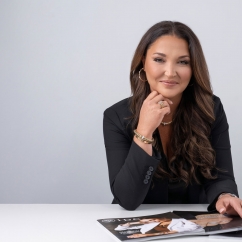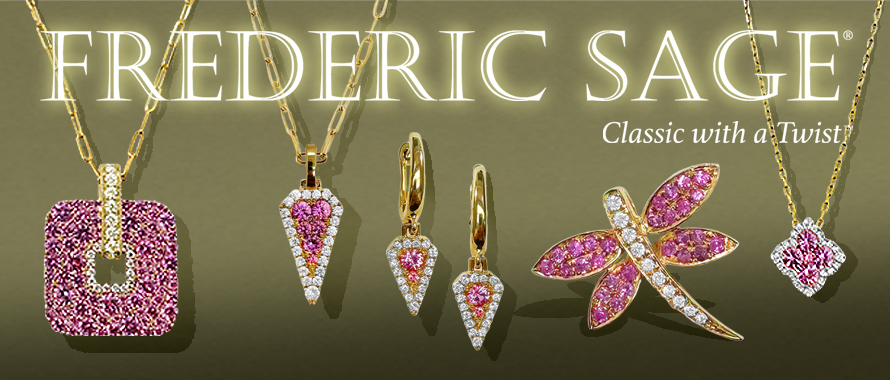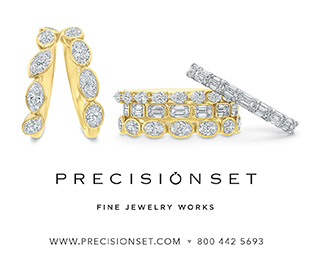Articles and News
Jewelry Store Buyers Circle: Data-Driven Tips to Master Inventory Productivity | March 06, 2025 (0 comments)

MERRICK, NY--My mission with The Jewelry Store Buyers Circle column is to empower jewelry store buyers with actionable insights and strategies that drive success in today’s dynamic market. By combining the precision of data analysis—such as key reports, inventory optimization, and sales forecasting—with practical advice on merchandising, vendor negotiations, and pricing strategies, this column will serve as a comprehensive guide. Beyond the numbers, I aim to explore the art of building strong vendor relationships and mastering the nuances of customer-centric buying decisions, ensuring readers are equipped to navigate both the analytical and human aspects of the jewelry business.
As a buyer, you’re responsible for ensuring your stores are stocked with the right products at the right time. But are you fully leveraging data analysis? If not, it’s time to modernize your approach. With a few strategic adjustments, you can boost sales, minimize the risk of carrying dead stock, and solidify your value as an indispensable asset.
1. Build a Core Inventory per Brand
Every brand carries a unique assortment of products, but not all are top sellers. Use sales data to build a core inventory selection of key items that should always be in stock. These products should represent the brand’s signature offerings and maintain steady, year-round sales.
To streamline reordering, set minimum stock levels for each product and automate alerts when inventory dips below the threshold. With just a click, you’ll instantly see what needs to be reordered, saving time and preventing stockouts.
2. Account for Store-Specific Needs
If you manage multiple locations, adjust inventory levels based on local demand, average selling price, and annual sales. A high-end urban store may need a wider bridal selection, while a suburban location might focus on affordable fashion pieces.
Understanding regional preferences prevents over- or understocking and ensures each store meets customer expectations.
3. Distinguish Between Invoiced and Special Orders
Not all special orders belong in your regular inventory. A single request doesn’t indicate demand, but tracking invoiced vs. special orders can help. If a product receives multiple invoices, consider adding it to stock. If special orders are rare, keep it off the shelf.
This approach keeps inventory lean while catering to customer needs.
4. Assess Average Days to Sell
Bridal customers expect quick turnaround times due to the seasonality and time-sensitive nature of their purchases, while fashion shoppers tend to have a slower sales cycle. By calculating the Average Days to Sell (AVG DTS), you can set clear goals for how quickly each product should turn over. Aligning your purchasing decisions with these expectations will help keep inventory fresh and profitable.
5. Manage Aged Inventory
Aged inventory isn’t always dead stock. If an older item still generates special orders, it may just need a variation in stock of that SKU. If special orders for a product come in consistently, it might signal that customers prefer it in a different style.
For example, an engagement ring with a round center stone that isn’t moving could potentially be swapped for the same engagement ring but with an oval center stone, which is more in demand. Work closely with your vendor to explore these options.
6. Set Up Regular Reordering
The simple act of setting predictable, automated reordering times will keep your business operating smoothly and prevent the frustration of out-of-stock situations. Use sales data to set a timeframe for when to reorder basic, high-demand items regularly. For your "bread and butter" products, consistent reordering is key to never missing out on potential sales.
As you fine-tune your buying decisions, let the data become your ally, and you’ll be equipped to meet customer demands while maintaining healthy margins.
The future of jewelry buying lies in the careful analysis of data. Are you ready for it?
Bio--Megan Crabtree is the Founder & CEO of Crabtree Consulting, a boutique consulting firm with a proven track record of successfully growing jewelry retailers and manufacturers for over two decades. Known for their unique data-driven approach, they flawlessly identify barriers and create tailored growth opportunities, fueling unprecedented success and helping clients reach their goals in the industry. Connect with Megan on LinkedIn at https://www.linkedin.com/in/megan-crabtree/ and visit crabtreeadvisory.com for more information.







